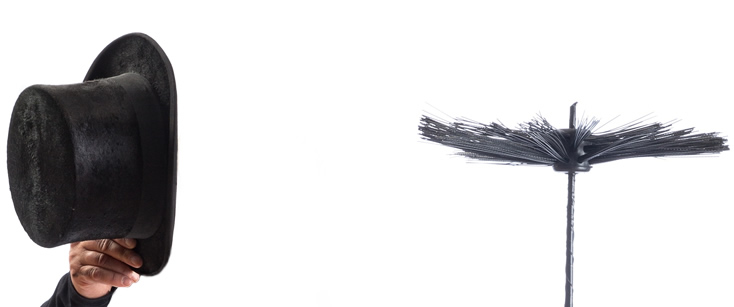Safety Inspection
SAFETY INSPECTION
Hearth, Patio and Barbecue Association recommends having your insert and venting system inspected annually and serviced by a CSIA certified chimney professional. Collar City Soot Slayer will make sure the appliance is installed properly per the code and manufacturer’s recommendations.
Level 1 Inspection
If your fireplace, stove or chimney hasn’t changed and you plan to use your system as you have in the past, then a Level 1 inspection is required.
- Examine the readily accessible* portions of the chimney exterior
- Examine the readily accessible portions of the chimney interior
- Examine the accessible** portions of the stove or fireplace and the chimney connection
- Your professional inspector will see if your chimney is free of obstruction and combustible deposits (such as creosote) and will also evaluate the basic soundness of the chimney structure and flue as well as the basic fireplace or stove installation and connections.
Level 2 Inspection
A Level 2 inspection is required when any changes are made to your fireplace, stove or chimney system. Changes may include:
- A change in fuel type
- Changes to the shape, size or material of the flue (such as chimney relining)
- Replacement or addition of a stove or fireplace of a different type
- Replacement or addition of a stove or fireplace of a different input rating or efficiency
A Level 2 inspection is also required:
- Upon sale or transfer of a property
- After an operational malfunction of your stove or fireplace (such as a chimney fire)
- After an external event that may have caused damage to the chimney (such as building fires, earthquakes or severe weather)
- A Level 2 inspection more thorough and detailed than a Level 1 inspection. A Level 2 inspection includes everything in a Level 1 inspection, plus inspection of the accessible portions of your chimney interior and chimney exterior. It also includes inspection of basements, crawl spaces and attics adjacent to your stove or fireplace and chimney, with attention to proper clearances from combustible materials in accessible locations.
A Level 2 inspection requires no demolition and requires no specialty tools to open doors, panels or coverings. A Level 2 inspection may include visual or video inspection of the internal joints and surfaces of chimney flue liners, as long as it is not necessary to remove or destroy any permanently attached portions of the chimney or building structure or finish.
Level 3 Inspection
Level 3 inspection is required when a Level 1 or Level 2 inspection suggests a hidden hazard which cannot be evaluated without using special tools or demolition to access concealed areas of the chimney or flue. When serious hazards are suspected, a Level 3 inspection may be the only way to determine the condition of the chimney system.
A Level 3 inspection includes everything in a Level 1 and a Level 2 inspection, and in addition assesses both the condition and the proper construction of the concealed portions of your chimney structure and flue. A Level 3 inspection may require removal of certain components of the building or chimney (such as your chimney crown or interior chimney wall) for access to the concealed areas that must be inspected.
* Readily Accessible: Exposed, or capable of being exposed, for operation, inspection, maintenance or repair without the use of tools to open or remove doors, panels or coverings.
** Accessible: May require the use of commonly available tools to remove doors, panels or coverings, but will not damage the chimney or building structure or finish.

